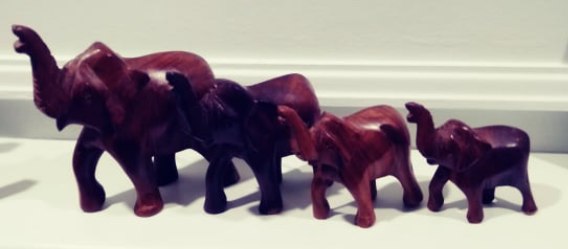Four Triumphant Elephants
Four Triumphant Elephants - Day 127 - Daily Content Challenge
These four elephants look so happy as they raise their trunks high in the air. Elephants use their long trunks for many things. They can pick up objects, give a trumpet warning, greet other elephants, or suck up water for drinking or for bathing by using their trunks.
An elephant’s trunk or nose contains eight pairs of muscles and can be about 6-8 feet long. An African elephant’s trunk is about 15 centimetres in diameter at the tip with a nostril with a diameter of 2 inches.
An elephant trunk has no bones, a small amount of fat, and close to 40,000 separate muscles. There are two types of muscles - superficial and internal. The superficial muscles are dorsals, ventrals and laterals. The Internal muscles are transverse and radiating.
The trunk is connected to the elephant's head by a bony opening in the skull. There is a special probiscis nerve running from the brain to the trunk to control the trunk's movements.
Before birth, the trunk and the upper lip of the elephant fetus are not connected. After birth the muscles of the calf start to develop and eventually the upper lip joins with the nose to form a fully-working trunk.
The elephant’s trunk is an extension of the upper lip and nose. Elephants can smell food and water from up to 19 km (30 miles) away. African elephants can lift close to 300 kg (660 lbs) with their trunks.
The chances of an adult elephant surviving in the wild without its trunk are slim. An adult needs to drink up to 50 gallons of water and to eat between 200-600 pounds of food each day. If he didn’t have a trunk it would be near-impossible for the elephant to consume that much food or water.
# living life abundantly # published author
Welcome!
Enjoy my posts.



